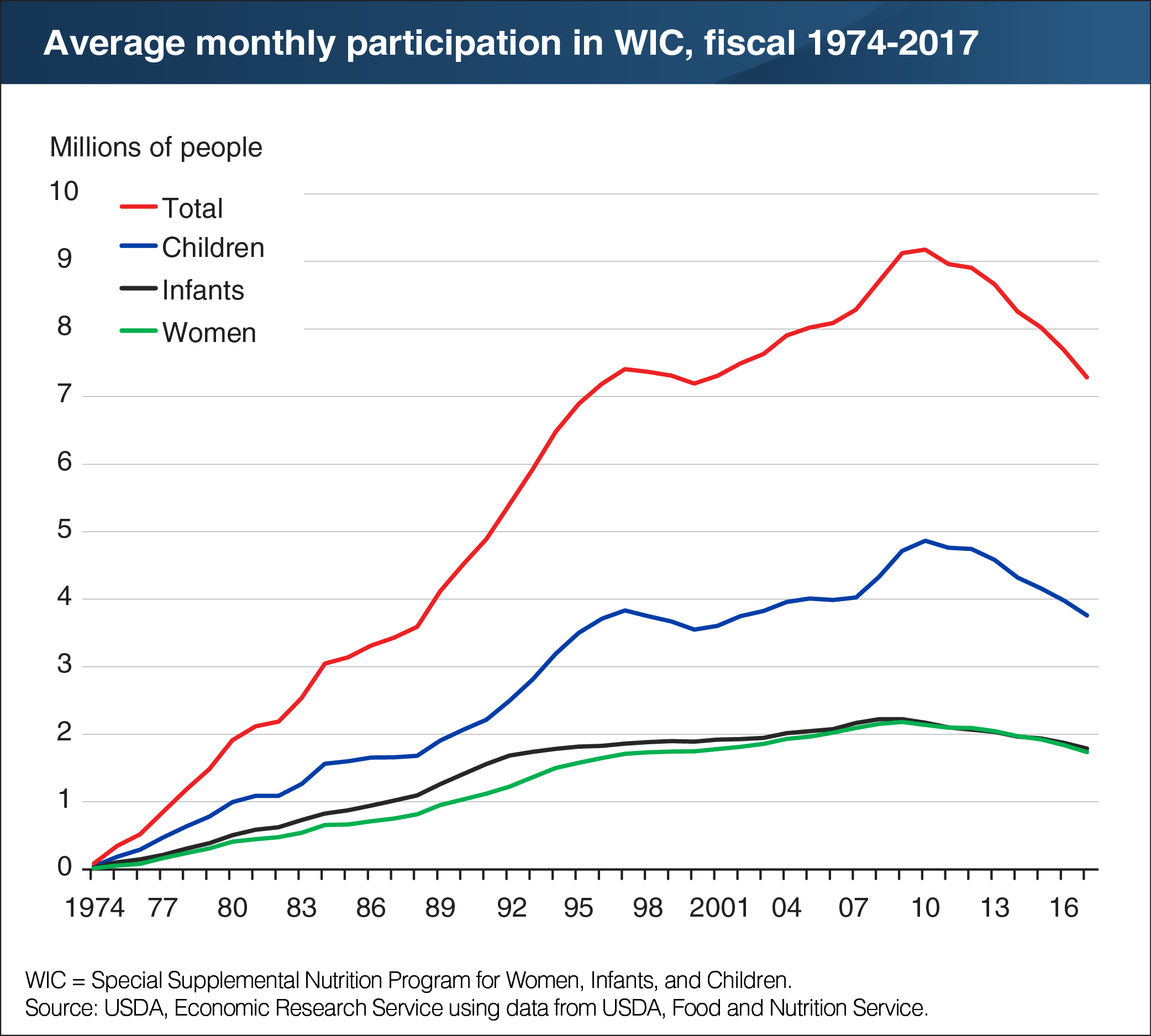Decline in WIC participation persists
- by Victor Oliveira
- 3/16/2018

USDA’s Special Supplemental Nutrition Program for Women, Infants, and Children (WIC) provides supplemental food, nutrition education, and health care referrals to low-income, nutritionally at-risk pregnant, breastfeeding, and postpartum women as well as infants and children up to age 5. In fiscal 2017, the program served an average of 7.3 million people per month, down 21 percent from its peak in fiscal 2010. For the 7th consecutive year, participation for all three major groups fell. The number of women, infants, and children participating in WIC each fell by 5-6 percent. Improving economic conditions in recent years have likely played a role in the participation decline. Since applicants must have incomes at or below 185 percent of poverty or participate in certain other assistance programs to be eligible, the number of people eligible for WIC is closely linked to the health of the U.S. economy. Falling WIC caseloads may also reflect the decline in the number of U.S. births. Since 2007, the number of births have fallen each year except in 2014. This chart appears in the ERS report, The Food Assistance Landscape: FY 2017 Annual Report, released on March 15, 2018.


